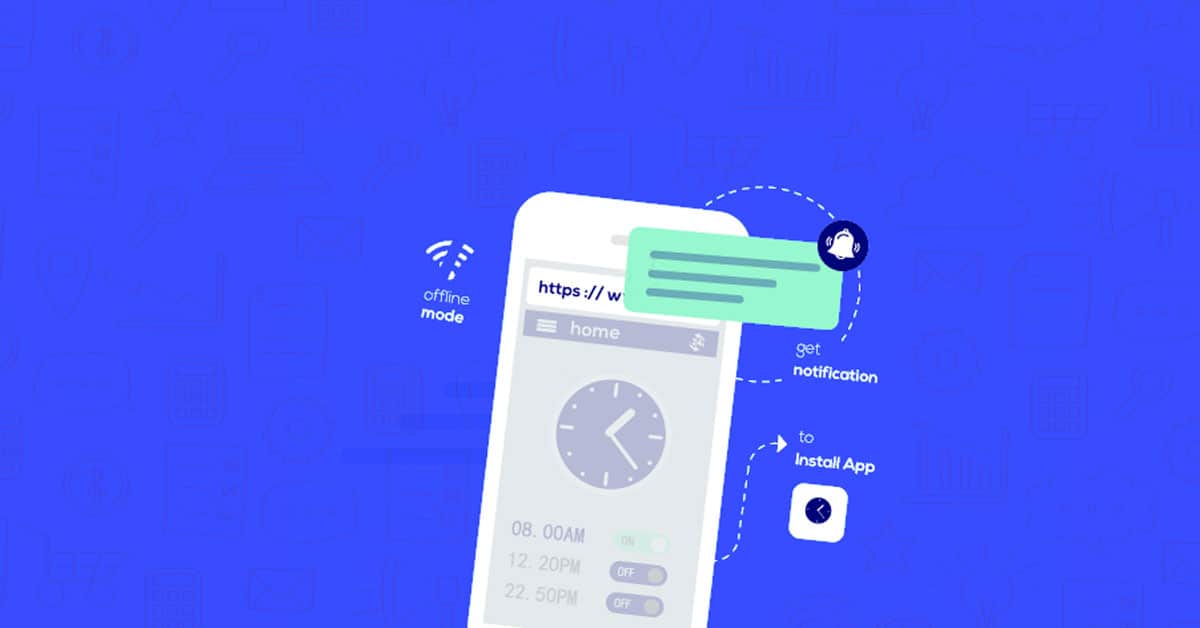The mobile app market has grown exponentially in the last couple of years. As of March 2017, there are more than 3 million apps on Google Play store and 2.8 million apps on Apple. Despite the influx of apps in the market, their future doesn’t seem so bright.
A Gartner study states less than 0.01% of all mobile apps will get successful commercially by 2018 because consumers spend 60% of their total mobile time in only three apps. The reasons that stop users from giving in to each app are many; some of them are:
- Storage issues in the smartphone
- Privacy policies of the application
- Excessive internet consumption
- Shortened battery life of the smartphone
As native apps are expensive to build, it is important for businesses to find a cost-effective way to engage with their customers on mobile.. That’s where progressive web apps (PWAs) enter the picture.

What is a PWA?
Google says a PWA uses modern web capabilities to deliver an app-like user experience. Having a PWA can make app development less necessary. It is said PWAs are transforming the legacy of mobile web practices. As more and more eCommerce firms are getting on the PWA bandwagon, let’s take a look at the benefits of PWAs:
1) User-friendly
Progressive Web Apps work for every user, irrespective of browsers. PWAs implement a strategy for web design that focuses on core web page content first. This functionality gives PWAs an edge over native apps.
Also read: Should eCommerce Businesses Have A Progressive Web App? Absolutely!
2) Fast
PWAs are 4X faster than responsive or m.dot websites. If you go to a PWA, the website content will load as and when the user scrolls down rather than all at once. The user can completely avoid the white screen on his or her mobile phone while waiting for web content to load.
This is the reason why a PWA feels so fast! Due to a PWA, the website’s bounce rate automatically goes down as it is able to hook the user to the content from the very beginning.
3) Responsive
A PWA is the perfect example of cutting edge technology. It can be accessed on any device – be it desktop, mobile, tablet or fablet.
4) Offline functionality
A PWA continues to ensure an interactive user experience even when the internet connectivity is poor by delivering pre-patched content to the user through Service Workers. PWAs are connectivity independent.

Also read: Why You Must Convert Your Business Mobile Site Into A Progressive Web App (PWA)
5) Up-to-date
Unlike mobile apps, PWAs are continuously updated. Whenever a user loads the website content, (s)he gets to see the latest version of the page. All set and done – PWAs are better optimized.
6) Discoverable
PWAs can be optimized just like a website URL. They are discoverable by search engines.
7) Re-engageable
Nearly 3/4th of consumers like to engage with their favourite brands through push notifications. PWAs make it possible to re-engage with the users via push. 2.7X more people are ready to open and click a web push notification as compared to an email.
8) Safe
PWAs are served through HTTPS. This prevents cyber-related risks and ensures that the website content is not tampered with.

Also read: Why Apple Needs To Adapt To Progressive Web Technologies
9) Linkable
PWAs are linkable and can be promoted just like website URLs.
10) Installable
PWAs don’t require complex installation. In fact, the users don’t require any installation whatsoever. They can browse through the website and even make purchases (in the case of eCommerce stores) without having to install the app.
Optimizing PWAs for effective SEO
The way SEO works may cause a bit of an issue with a PWA. Search engines crawl the pages first to be able to rank and index them. However in a PWA, the content is loaded after the pages are built (so that the loading time can be eliminated). The web content should be written or edited in such a way that they are search engine, indexation and ranking friendly throughout.
Curating web content for a PWA
How your customers choose to interact with the web pages is important for you to understand as this will help you display the correct information on the PWA – thereby boosting the engagement levels.
PWAs have a functionality that captures user behaviours and preferences, and push notifications are delivered on the basis of this data.
Signs you need a PWA
If you have:
1) content that needs to be updated continuously for your users
2) a chat or communication platform that requires real-time updates and push notifications for new products getting added on the website
3) a customer base that is likely to browse through the website offline (Running a blog or a news-based website?)
4) a website that a consumer checks several a times a day for its updated content
5) users that use supported browsers
Create your own PWA with Wigzo
With superior features such as offline access, fast page loading, push notifications, etc., it is quite clear that PWAs are here to stay. If your business is thinking of creating one, Wigzo can help! Here is a step-by-step guide on creating a PWA with Wigzo.














